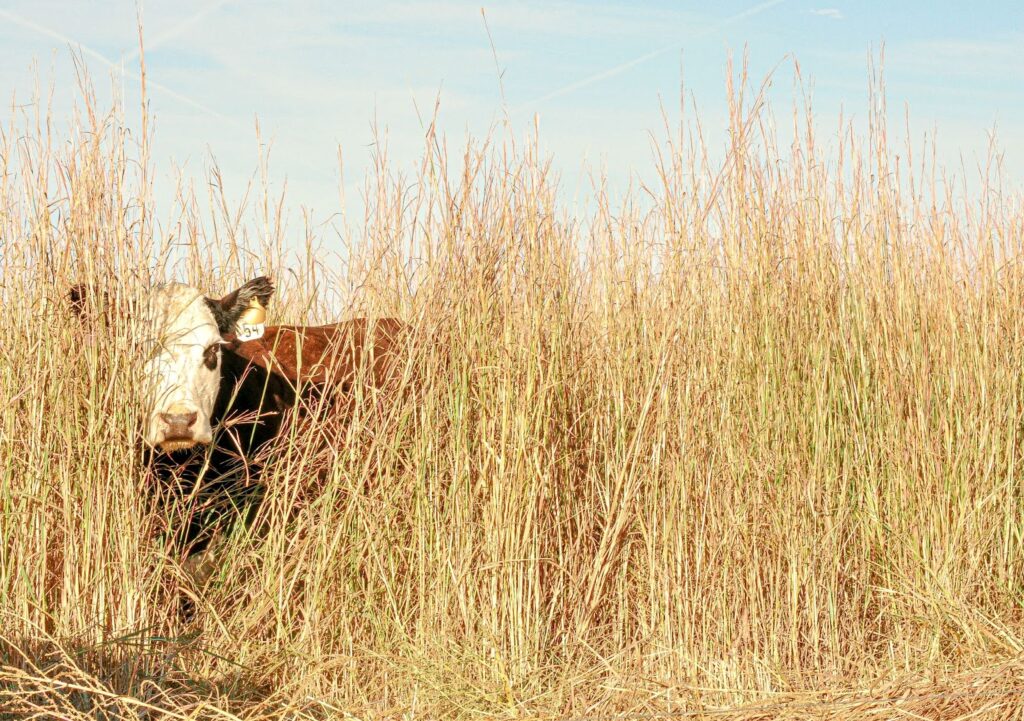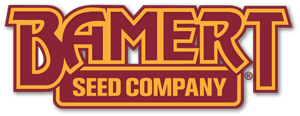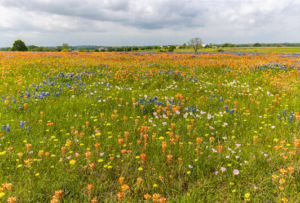As we’ve transitioned from March to April, many of us are experiencing Spring in full force. While these warmer temperatures might be ideal for outdoor activities and evening cookouts, they’re also prime-time planting for warm-season perennials.
Planting native perennials is an excellent choice for restoration and/or revegetation projects. These native plants promote biodiversity in a variety of settings, including DOT, oil and gas, and agricultural projects. Proper planning and planting ensure the highest chance of establishment, allowing you to experience the value of these warm-season natives.
Choosing Warm-Season Perennials: Everything You Need to Know

Warm-season native perennials are native grasses and forbs that grow in the warmer months of the year and will come back year after year. These native species typically have deep roots that allow them to survive drought conditions and store nutrients for the winter months. Once established, they are low maintenance.
Benefits of Choosing Native Perennials
The benefits of warm-season perennials are numerous. They promote soil health, prevent erosion, promote infiltration, and create a safe habitat for wildlife. Native warm-season perennials are also drought-tolerant and resilient, making them an ideal choice for areas of the Southwest that often experience hot, dry conditions as we creep closer to the summer months. Because they are drought hardy, once established, they will continue to provide cover and forage for wildlife and livestock.
Choosing native warm-season perennials has several advantages over non-native plants and introduced species. Native plants are adapted to the local environment and require less water and fertilizer than non-native plants. They also promote multi-levels of biodiversity by providing food and shelter for many species of local wildlife and pollinators above ground while also creating a strong soil structure below it. An easy way to quickly identify native seeds that are ecologically adapted to your site, characteristics of your soil, and climate is by using Seed-Spec. Just by entering a few location points, you can easily identify key characteristics of your soil and develop a custom blend that is highly adaptable to your location and needs.
Native Perennials as the Best Choice for Reclamation and Restoration Projects
For farmers and ranchers, native species prevent soil erosion, provide recurring food sources for livestock, and encourage biodiversity with birds, pollinators, and other wildlife. For DOT projects or oil and gas pipelines, native species are an excellent choice because they are highly adapted to a site, provide ecosystem services because of the biodiversity they create, and come back every year, reducing the need for re-planting. Many perennials also grow low enough to fit the height requirements necessary for solar farms.
Best Practices in Planting Warm Season Perennials
 Planting warm-season perennials requires careful planning and preparation. Our team has created an in-depth resource with detailed recommendations on seeding and establishing that can be found in this blog post.
Planting warm-season perennials requires careful planning and preparation. Our team has created an in-depth resource with detailed recommendations on seeding and establishing that can be found in this blog post.
First, it’s essential to clearly identify the key characteristics of your site: what makes up the soil, what kind of drainage your spot experiences, the typical climate and moisture levels, and more. It’s also important to remove any weeds, rocks, or debris from the planting area. When planting, follow the recommended seeding rates and planting depth for the specific plant species – our recommended is ¼-½ inch for almost every native we sell. December through June is the most common seeding window. Most folks seed in the spring.
Native perennials will germinate when the soil temperature reaches the mid 60’s. If possible, use a native grass drill to plant the seeds. Do not plant the seed too deep and keep the area moist until the plants are established.
Perennial Recommendations: Straights and Blends
- Mixing different species of perennials can provide a variety of benefits. It can increase biodiversity, promote soil health, and provide a more attractive landscape. When planting a mix of perennials, it’s essential to choose species that have similar growing requirements to ensure successful establishment.
Some of our most popular native warm-season straights are the infamous “Big 4”:
- Big Bluestem – a tall grass that can grow up to 8 feet tall with deep roots, it provides cover and forage for wildlife.
- Indiangrass – a tall grass that can grow up to 7 feet tall and is a highly desirable grazer for livestock. While wildlife are less drawn to it, it’s a great fawning cover for deer and a desirable nesting cover for quail and turkey.
- Little Bluestem – a mid-grass that grows easily and takes hold in a variety of soil types. It can grow to be up to 3 feet tall and is the dominant forage of the True Prairie in Oklahoma.
- Switchgrass – the most versatile of the Big 4, it can grow in a wide range of soils, provides forage for livestock in its early stages of growth, and is a haven for ground-nesting birds and fawning deer.
Choosing Warm-Season Perennials: Why Blends are Best
While you can’t go wrong with any of these native grasses, your best bet is to choose a mix of grasses, forbs, and legumes that are well-suited to your specific project and climate. We have more info on this below, but we want to stress how much our team wants to be in communication with you as you are researching, planning, and executing your reclamation or revegetation project. We want our customers to experience the highest chance of successful establishment the first time. We will take the time to talk with you, learn about your needs, and provide a recommendation that allows you to plant with confidence.
While many of our customers desire a custom blend, we have in-house blends with high success rates. Three of our most popular in-house blends include:
- Deluxe Prairie – this blend is made up of warm-season grasses with deep roots. It is invaluable for improving soil structure while also providing high forage production and wildlife cover.
- Hill Country – this blend of warm-season grasses plays very well with other forbs for an end product that is beautiful, diverse, and well-suited for grazing.
- Premium Pasture – unlike the two blends above, this product contains the addition of a native cool-season grass (wheatgrass). This increases the grazing season for cattlemen and land managers. While an excellent food source for livestock, this blend also provides wildlife habitat.
Planning Your Project
Before any seed enters the ground, a successful establishment starts with strategic planting. Matching the soils and ecological site of your project with the right native species is critical for success. And the easiest way to do this?
Seed-Spec.
Seed-Spec is a valuable tool for anyone planning a project involving native warm-season perennials and other native species. This online resource can help you determine which seeds and blends are best suited for your specific project and location. By drawing your project boundaries, Seed-Spec will provide distinct information about your plot and your soil type and then generates a list of recommended native seeds. This ensures that you are using the right seeds for your project, which saves time, money, and effort in the long run.
Using Seed-Spec is simple and intuitive. You can either use the website to plot the location points of your project or upload a pre-drawn map of your area. Seed-Spec will scan the location, identify key information about your soil (this is critically important because most project areas cover a range of soils and factors), develop a custom seed blend that is adapted to your soil type and average rainfall, and provide you with a quote for the blend or allow you to print out a report that can be used to consult with our team.
It’s easy to see how using a tool like Seed-Spec will save you hours of plotting, researching, and purchasing while allowing you to experience the highest chances of success the first time.
We also want to stress how eager our team is to offer you our help and guidance as you plan your project. Our team of experts has decades of experience in growing high-quality native seed, reclamation, and conservation. We love consulting with our customers to help them find the blend that will make their project a success and lead to healthier ecosystems for future generations. Contact us today to learn more about what we can do for you.



